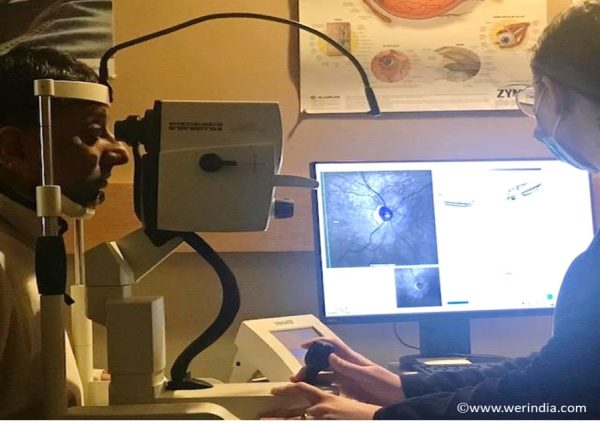
Types of Glaucoma And Ways To Manage And Optimize Remaining Vision
People often ask, can we improve glaucoma vision? Improving glaucoma vision primarily involves managing the condition to prevent further damage and preserve existing vision. What is glaucoma? Glaucoma is a type of eye condition that can cause vision loss and blindness by damaging a nerve in the back of your eye called the optic nerve.
Glaucoma is of distinct types based on the characteristics and underlying causes. The main types of glaucoma include:
- Primary Open-Angle Glaucoma (POAG): This is the most common type of glaucoma, characterized by a gradual increase in intraocular pressure (IOP) caused by the slow clogging of drainage canals within the eye. POAG typically progresses slowly and may not cause noticeable symptoms until vision loss has occurred.
- Angle-Closure Glaucoma: Also known as closed-angle glaucoma or narrow-angle glaucoma, this type occurs when the iris positioned too close to the drainage angle, obstructing the flow of aqueous humor (fluid) out of the eye. Angle-closure glaucoma can develop suddenly (acute angle-closure glaucoma) or gradually (chronic angle-closure glaucoma) and it is a medical emergency when symptoms such as severe eye pain, headache, blurred vision, and nausea occur.
- Normal-Tension Glaucoma (NTG): In NTG, damage to the optic nerve and vision loss occur despite intraocular pressure (IOP) being within the normal range. The exact cause of NTG is not known, but factors such as reduced blood flow to the optic nerve and individual susceptibility may play a role.
- Secondary Glaucoma: Secondary glaucoma refers to glaucoma that develops as a result of another eye condition, injury, or underlying medical condition. Causes of secondary glaucoma include eye trauma, eye surgery complications, inflammation (uveitis), certain medications (e.g., corticosteroids), and systemic diseases such as diabetes and hypertension.
- Congenital Glaucoma: This rare form of glaucoma occurs in infants and young children due to abnormalities in the eye’s drainage system present from birth. Congenital glaucoma often manifests with symptoms such as excessive tearing, light sensitivity, and cloudy corneas, and may require surgical intervention to prevent vision loss.
- Pigmentary Glaucoma: Pigmentary glaucoma occurs when pigment granules from the iris detach and block the drainage angle, leading to increased intraocular pressure (IOP). This type of glaucoma is more common in younger, nearsighted individuals and may cause symptoms such as blurry vision, halos around lights, and eye pain.
- Exfoliative Glaucoma: Exfoliative glaucoma is associated with the accumulation of abnormal deposits of protein material on intraocular structures, including the drainage angle. These deposits can obstruct the outflow of aqueous humor, leading to elevated intraocular pressure (IOP) and optic nerve damage.
While there is no cure for glaucoma and vision loss that has occurred due to glaucoma is irreversible, there are strategies to help optimize remaining vision and maintain overall eye health. Each type of glaucoma requires careful management and treatment to control intraocular pressure (IOP), preserve vision, and prevent further damage to the optic nerve. Early detection through regular eye exams is essential for diagnosing glaucoma and initiating appropriate interventions to minimize vision loss. Treatment options may include prescription eye drops, oral medications, laser therapy, or surgical procedures, depending on the type and severity of glaucoma.
Follow treatment plan: Adhering to the treatment plan prescribed by your ophthalmologist is crucial. This often includes prescription eye drops, oral medications, laser therapy, or surgery to control intraocular pressure (IOP) and slow the progression of the disease.
Regular eye exams: Regular check-ups with an eye care professional are essential for monitoring the progression of glaucoma and adjusting treatment as needed. Early detection and intervention can help prevent further vision loss.
Manage intraocular pressure (IOP): One of the major risk factors is eye pressure. Keeping intraocular pressure within the target range can help slow the progression of glaucoma. This may involve using prescribed eye drops consistently, taking oral medications as directed, or undergoing procedures such as laser trabeculoplasty or surgical interventions to lower IOP.
Protect eyes from injury: Trauma to the eye can worsen glaucoma. Protect your eyes by wearing safety glasses when participating in activities that pose a risk of eye injury, such as sports or certain occupations.
Maintain overall health: Certain lifestyle factors can affect eye health. Aim to maintain a healthy lifestyle by eating a balanced diet, exercising regularly, managing stress, and avoiding smoking. Studies suggest that maintaining cardiovascular health may also benefit eye health.
Monitor medication side effects: Sometimes the medications used to treat other health conditions can exacerbate glaucoma or interact with glaucoma medications. Ensure your healthcare providers are aware of your glaucoma diagnosis and monitor for any potential interactions or adverse effects.
Use vision aids: If glaucoma has caused significant vision loss, vision aids such as magnifiers, special glasses, or low vision devices may help optimize remaining vision and improve quality of life. Low vision rehabilitation services can provide guidance on using these aids effectively.
Stay informed: Educate yourself about glaucoma, its progression, and treatment options. Understanding your condition empowers you to actively participate in your eye care and make informed decisions about treatment and lifestyle choices.
Remember to consult with your ophthalmologist or eye care specialist for personalized recommendations tailored to your specific situation. They can provide guidance on managing glaucoma and optimizing your vision to the best extent possible.
Image: www.werindia.com (all rights reserved)
Author: Sumana Rao | Posted on: February 23, 2024
« Poor Sanitation Can Cause Whipworm Infection Ways To Create A Comfortable Sleeping Environment »




















Write a comment